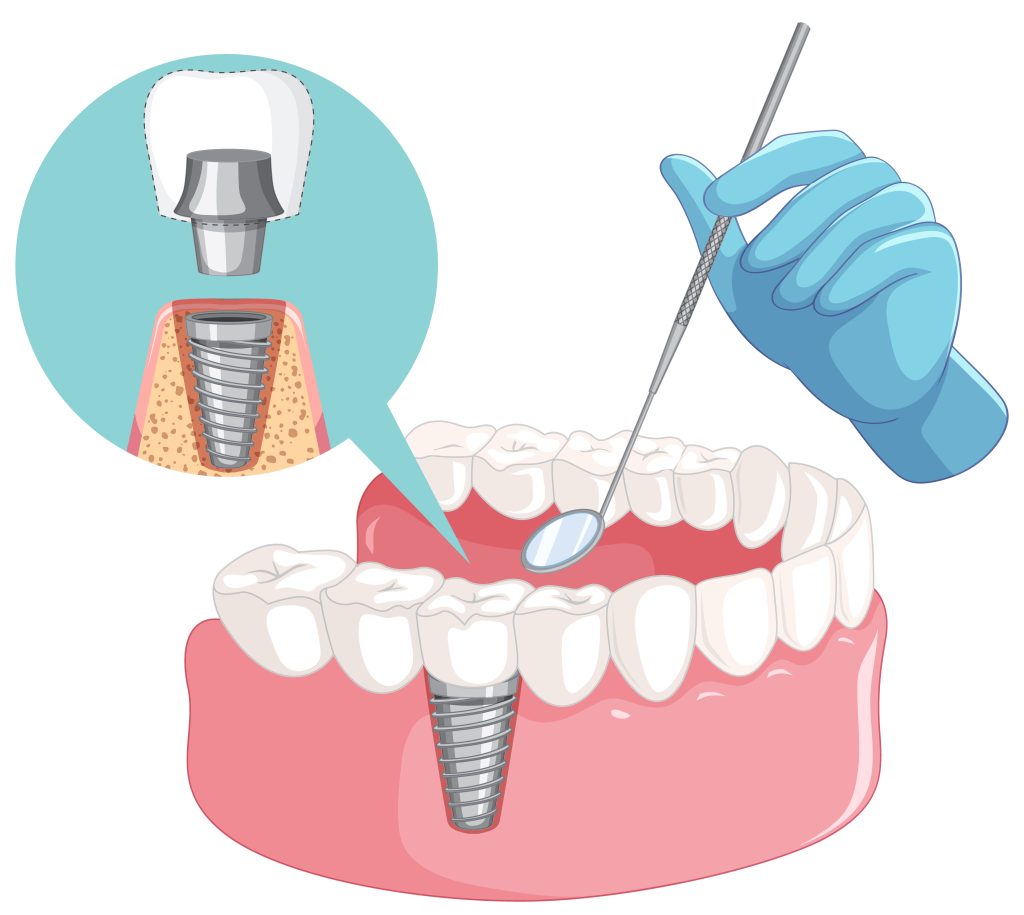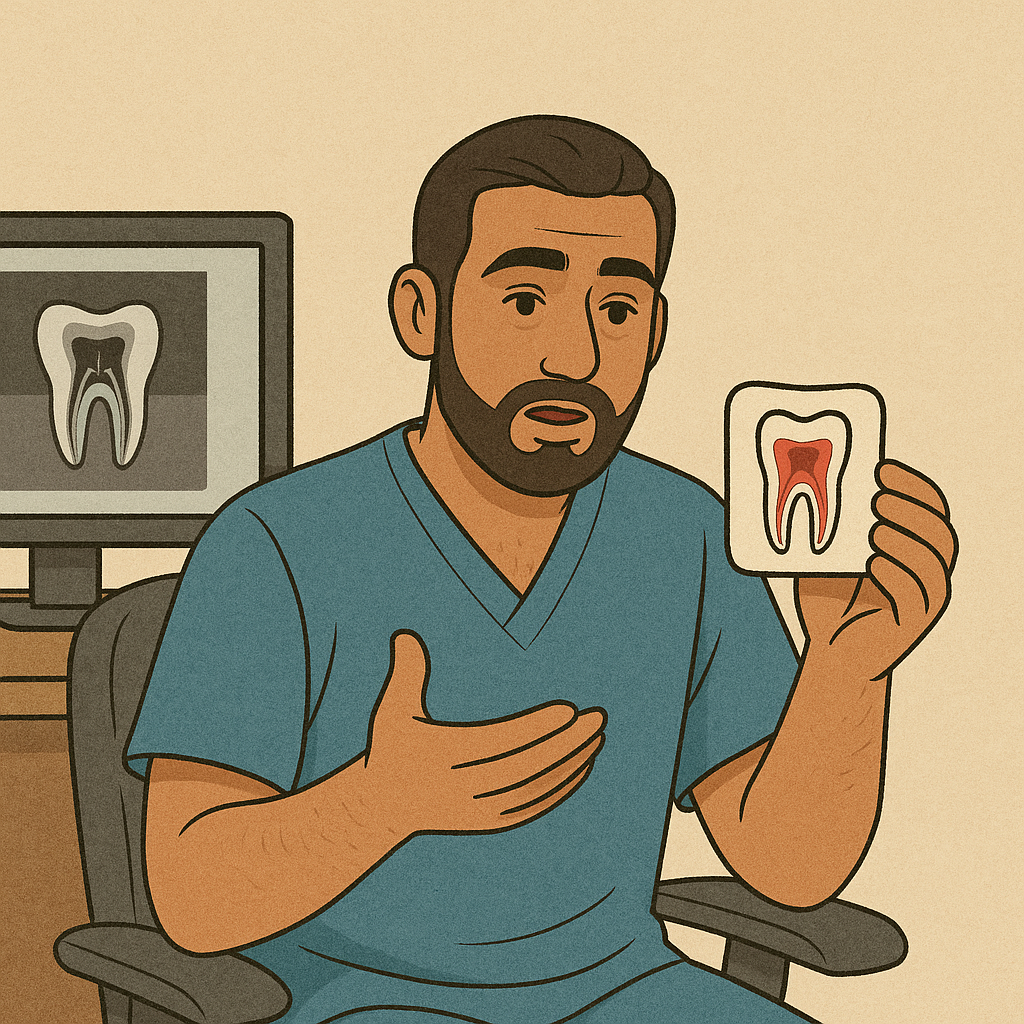Unlike metal fillings of the past, today’s composites are engineered materials designed for dentistry. They contain a resin matrix and fine ceramic-glass particles that give the restoration polish, translucency, and durability. In clinical language you may see this called a dental restoration filling, or simply a “composite”. Whatever the name, the goal is the same: preserve as much natural tooth as possible and return comfortable function.
Introduction to Dental Restoration
If you are wondering what dental restoration is, think of it as conservative repair. We diagnose the problem, remove weakened or infected tissue, and rebuild what is missing using a biocompatible material that bonds to your tooth. Good restorative dentistry is not only about filling a hole. It is about protecting the pulp (the living nerve inside), stabilising the bite, sealing out bacteria, and creating a surface your gums will accept.
Modern restorative care sits at the crossroads of dentistry, endodontics (nerve-related treatment), prosthodontics (crowns, onlays, dentures), and periodontal health (your gums and bone). Sometimes your plan is straightforward – one conservative composite. Sometimes we coordinate with implants or plan a veneer or crown. The right choice depends on diagnosis, not trends.
Types of Dental Restoration
Technique (how it’s made)
- Direct restoration
Done in one visit, right in your mouth. This covers most tooth-coloured composite fillings and short-term protective fillings. - Indirect restoration
Made outside your mouth (in a lab or with a scanner/mill) and then bonded in. Examples: ceramic inlays, onlays, veneers, and crowns. Better for larger rebuilds.
Material (what it’s made of)
- Composite resin
Tooth-coloured, bonds to your tooth, very versatile. Usually the first choice for small to medium repairs. - Ceramic (porcelain like E-max or zirconia)
Very strong and keeps its shine for years. Used for bigger restorations such as onlays and crowns. - Glass ionomer
Sticks well to dentine and slowly releases fluoride. Helpful as a base or as a protective or temporary option in higher-risk areas. - Amalgam (silver metal)
Older material that we rarely need today.
Dental restoration: step by step at TRUE SMILE
1) Diagnosis and planning
We look closely at the tooth with magnification, take the right X-rays or scans, and check how your teeth meet when you bite. If needed, we place a small rubber sheet around the tooth (a rubber dam) to keep it perfectly dry. A dry field helps the filling bond better and last longer.
2) Anaesthesia and comfort
We gently numb the tooth with local anaesthesia, so you feel pressure or vibration, not pain. If you feel anxious, nitrous oxide (laughing gas) is available. Your comfort is part of the treatment plan.
3) Cleaning out decay, preserving healthy tooth
Using precise, conservative technique—often with a microscope—we remove only the softened, infected part of the tooth and keep as much healthy structure as possible. If the cavity is deep but the nerve is healthy, we add a protective layer to calm the tooth.
4) Bonding the tooth
We clean the area, then apply a primer and adhesive. Think of this as a liquid “grip” that links the filling to your enamel and dentine at a microscopic level. Good bonding is what makes modern restorations strong.
5) Building the tooth shape
We place the tooth-coloured composite in small layers and sculpt it to match your natural anatomy. For front teeth, we may use a few shades so the result looks like real enamel.
6) Light curing
A special light hardens each layer within seconds. Modern curing lights speed things up and help the material set fully.
7) Finishing, polishing, and bite check
We smooth and polish the surface to a high gloss, adjust the contact so floss slides through easily, and check your bite in different positions. This prevents tenderness and food trapping.
8) What to expect after
Mild sensitivity to cold can happen for a day or two, especially with deeper fillings. This usually settles on its own. If anything feels high or rough, tell us and we will adjust it quickly.
Timing
Most composite restorations are finished in a single visit. Larger repairs that need ceramic inlays, onlays, or crowns usually take two visits, since they are made outside the mouth and then bonded in.
Advantages and Disadvantages of Composite Restoration
Why we often choose composite
- Adhesive and conservative – keeps more of your natural tooth compared with traditional full-coverage options.
- Aesthetic – blends with your enamel, ideal for smile-zone repairs.
- Repairable – if a small edge chips years later, we can usually add material without replacing the whole restoration.
- Versatile – works for chips, cavities, worn edges, small diastema closures, and replacement of old metal fillings.
Trade-offs to understand
- Technique-sensitive – moisture control is critical. That is why we isolate and use meticulous bonding.
- Wear and staining – over the years, composites can lose gloss or pick up surface stain from coffee or tea; periodic polish brings back lustre.
- Size matters – very large defects sometimes need an indirect ceramic option to spread biting forces better.
No single material is “best” for everyone. Choosing well is the essence of good dental restoration services.
Dental Restoration Aftercare and Longevity
A well-made composite can last 5 to 10 years or more with thoughtful care; many in low-stress areas survive longer. Longevity is influenced by cavity size, your bite forces, diet, saliva chemistry, and home care. Practical advice:
- Clean between teeth daily. Interdental brushes or floss prevent stain and margin decay.
- Protect from overload. If you clench, a night guard protects both enamel and restorations.
- Hygiene visits every 3–6 months keep the margins polished and gums healthy.
- Diet awareness. Acidic drinks soften enamel and restorations; keep them to mealtimes and rinse with water after.
- Early review. Sensitivity to cold for a few days can be normal. Persistent symptoms or biting tenderness deserve a quick check.
Think of a composite as part of a system: tooth, restoration, gums, and bite. Look after the system, and your tooth restoration serves you quietly.
Choosing a Dental Restoration Provider
What should you look for when comparing dental restoration services?
- Clinical philosophy – conservative, adhesive dentistry that preserves structure whenever possible.
- Isolation and protocol – rubber dam, strict bonding steps, and attention to dental restoration procedures detail.
- Materials and shades – modern micro-hybrid or nano-hybrid composites, compatible bonding systems, and a full shade kit for natural results.
- Magnification – loupes or a microscope for precision finishing and tight, hygienic contacts.
- Integration with other care – the team can coordinate with endodontics if a nerve becomes symptomatic, with periodontics for gum shaping, or with prosthodontics for ceramic onlays, crowns, or implant restoration when a tooth cannot be saved.
- Transparent planning – a written plan, photos, and clear explanations of dental restoration types and alternatives.
At TRUE SMILE, our ethos is simple: treat your tooth as if it were our own, and choose the least invasive option that meets your goals.
When a Filling Is Not Enough
Sometimes a crack runs under an old filling, or the cavity is so extensive that a dental protective restoration is only a short-term solution. In those cases we will discuss indirect options such as a ceramic onlay or crown. If decay has reached the pulp, pain relief and endodontics may be needed before the final restoration procedure dental step. Your plan is always staged and explained in plain language.
A Note on Broader Restorative Options
Restorative dentistry is a spectrum. A small composite may be all you need; a severely broken tooth may call for a ceramic onlay or crown; a missing tooth may be best served with an implant and crown, or in selected cases dentures as a removable option. These are all dental restoration types within a coherent plan that considers your bite, gum health, aesthetics, and budget. When needed, we coordinate with our surgical and periodontics colleagues so your treatment remains seamless from start to finish.
Your Next Step
If you think you need a dental restoration, or you are comparing dental restoration procedures and materials, the surest path is a careful examination and an honest conversation. Bring your questions – including the search-style ones like “what is restoration in dental?” – and we will translate them into a clear, personalised plan.
























